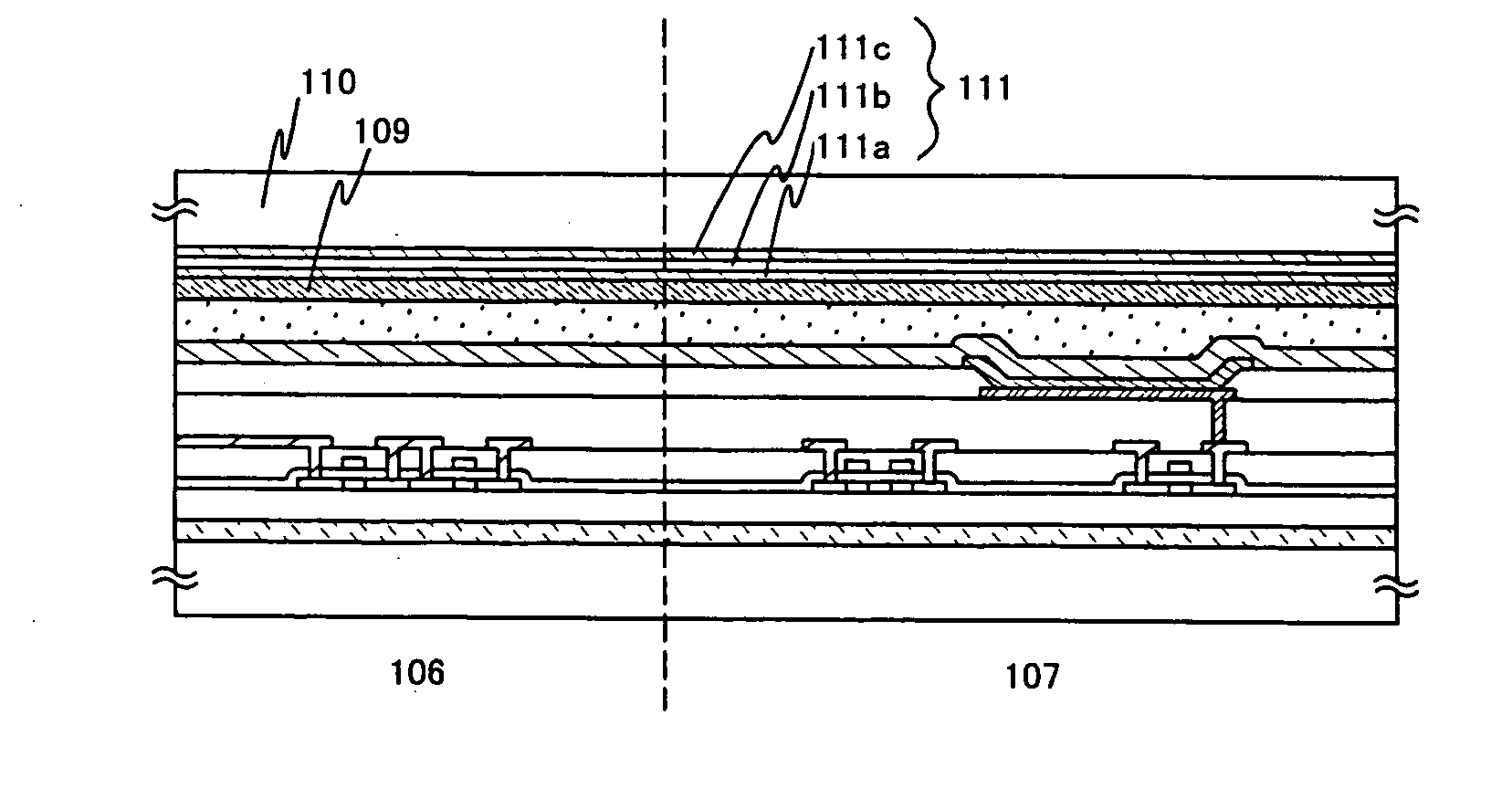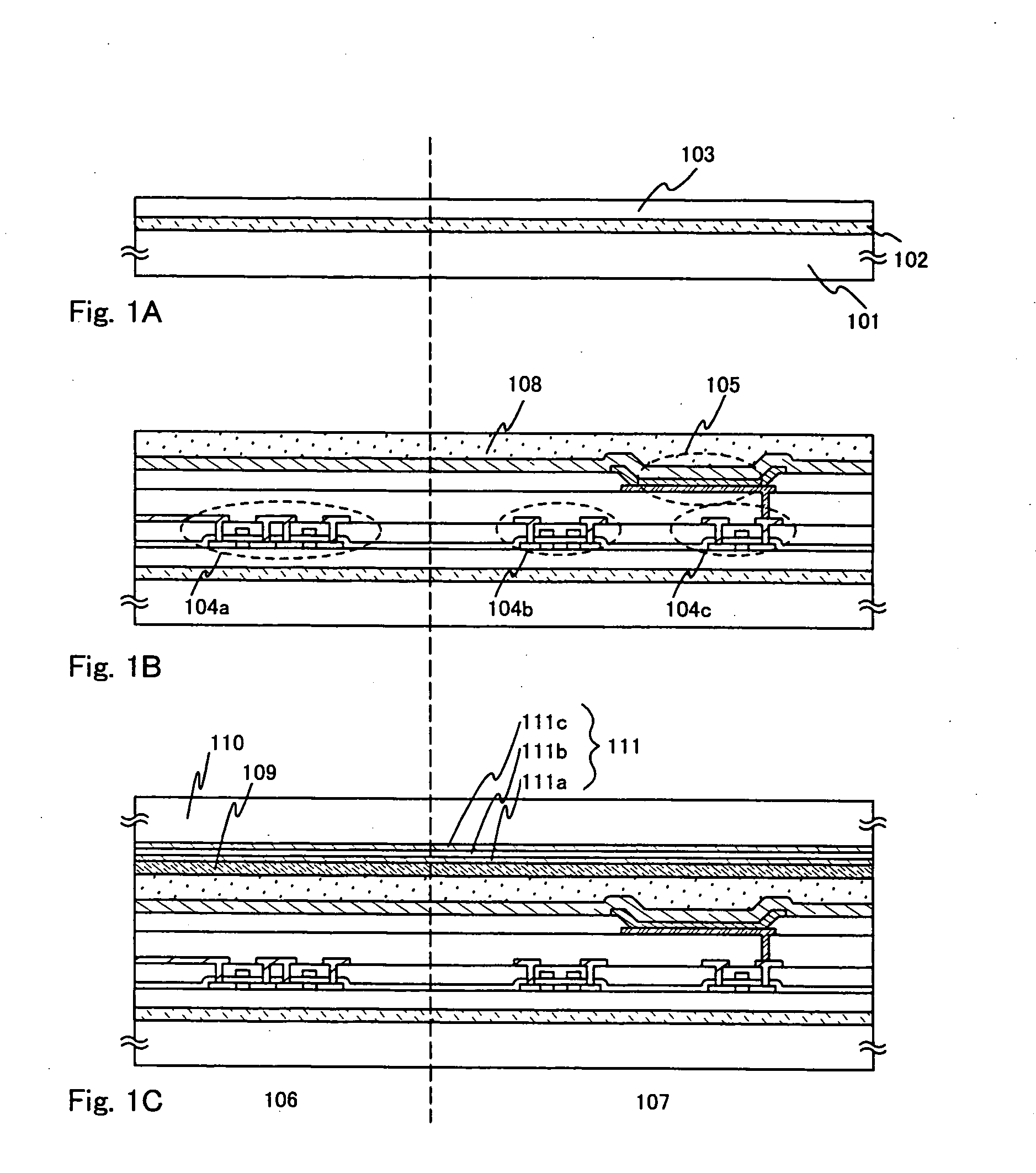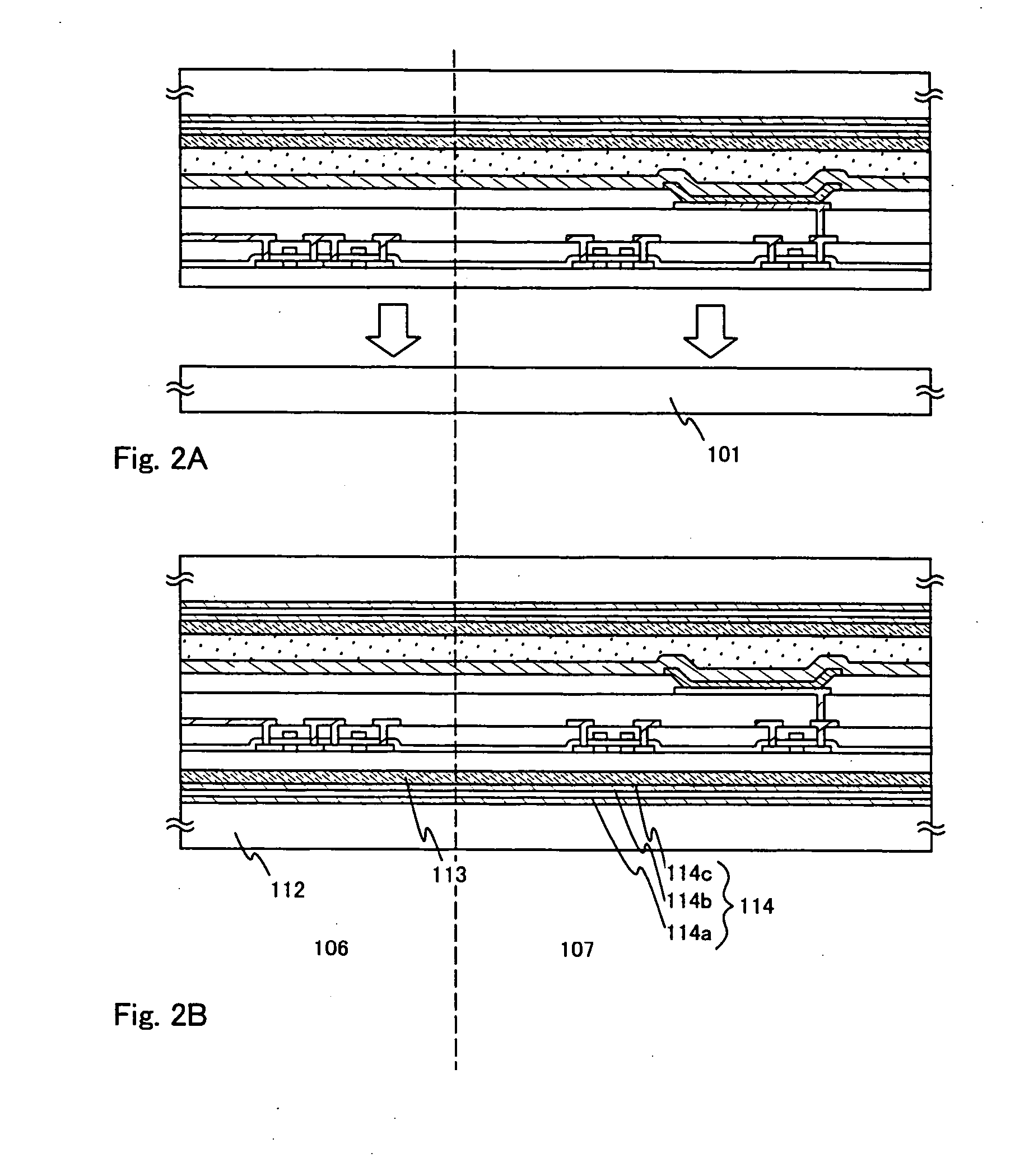Light emitting device and method of manufacturing the same
a technology of light-emitting devices and manufacturing methods, which is applied in the direction of organic semiconductor devices, sustainable manufacturing/processing, and final product manufacturing, etc., can solve the problems of short life of light-emitting devices, substrates are likely to be deformed, and plastic films are easily affected by heat, so as to reduce the stress of sealing films. , the effect of preventing a crack on the substra
- Summary
- Abstract
- Description
- Claims
- Application Information
AI Technical Summary
Benefits of technology
Problems solved by technology
Method used
Image
Examples
embodiment mode 1
[0044] In FIG. 1A, a first bonding layer 102 made of an amorphous silicon film is formed to have a thickness of 100 to 500 nm (300 nm in this embodiment mode) on a first substrate 101. Although a glass substrate is used as the first substrate 101 in this embodiment mode, a quartz substrate, a silicon substrate, a metal substrate or a ceramic substrate may be alternatively used. Any material can be used for the first substrate 101 as long as it is resistant to a treatment temperature in the later manufacturing steps.
[0045] As a method of forming the first bonding layer 102, a low pressure thermal CVD method, a plasma CVD method, a sputtering method or an evaporation method may be used. On the first bonding layer 102, an insulating film 103 made of a silicon oxide film is formed to have a thickness of 200 nm. As a method of forming the insulating film 103, a low pressure thermal CVD method, a plasma CVD method, a sputtering method or an evaporation method may be used. The insulating ...
embodiment mode 2
[0089] Next, another embodiment mode of the present invention, which differs from the above-described first embodiment mode, will be described.
[0090] In FIG. 3A, a first bonding layer 202 made of an amorphous silicon film is formed to have a thickness of 100 to 500 nm (300 nm in this embodiment mode) is formed on a first substrate 201. Although a glass substrate is used as the first substrate 201 in this embodiment mode, a quartz substrate, a silicon substrate, a metal substrate or a ceramic substrate may be alternatively used. Any material can be used for the first substrate 201 as long as it is resistant to a treatment temperature in the later manufacture steps.
[0091] As a method of forming the first bonding layer 202, a low pressure thermal CVD method, a plasma CVD method, a sputtering method or an evaporation method may be used. On the first bonding layer 202, an insulating film 203 made of a silicon oxide film is formed to have a thickness of 200 nm. As a method of forming th...
embodiment 1
[0139] In Embodiment 1, the outward appearance of a light emitting device according to the present invention and its connection to an FPC will be described.
[0140]FIG. 5A shows an example of a top view of a light emitting device according to the present invention, described in Embodiment mode 1. A second substrate 301 and a third substrate 302 are both plastic substrates having flexibility. A pixel portion 303 and driving circuits (a source-side driving circuit 304 and a gate-side driving circuit 305) are provided between the second substrate 301 and the third substrate 302.
[0141] In FIG. 5A, there is shown an example where the source-side driving circuit 304 and the gate side-driving circuit 305 are formed on the substrate on which the pixel portion 303 is also formed. However, the driving circuits represented by the source-side driving circuit 304 and the gate side-driving circuit 305 may be formed on a different substrate from the substrate on which the pixel portion 303 is form...
PUM
 Login to View More
Login to View More Abstract
Description
Claims
Application Information
 Login to View More
Login to View More - R&D
- Intellectual Property
- Life Sciences
- Materials
- Tech Scout
- Unparalleled Data Quality
- Higher Quality Content
- 60% Fewer Hallucinations
Browse by: Latest US Patents, China's latest patents, Technical Efficacy Thesaurus, Application Domain, Technology Topic, Popular Technical Reports.
© 2025 PatSnap. All rights reserved.Legal|Privacy policy|Modern Slavery Act Transparency Statement|Sitemap|About US| Contact US: help@patsnap.com



